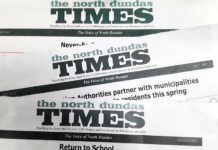No Mow May began in the UK, but quickly took off anywhere people were worried about the decline in pollinators, and the decline in the plants and flowers that sustain them. No Mow May is a movement that asks you to leave your lawnmower alone for the month of May. Don’t cut your grass. Let the wildflowers in your lawn grow for the month, leaving the nectar available for the pollinators. Who are these pollinators? They are the bees, birds, bats, butterflies, moths, flies, beetles, wasps, and some small mammals. They drink the nectar and eat the pollen of flowers and other plants, and as they travel from flower to flower, and plant to plant, they transport pollen from one flower to another. Without this, a good number of our plants would not get fertilized. Pollinators are in decline because of climate change, loss of habitat, loss of native plants, and pesticides that kill virtually all the food for the pollinators.
If you must mow, there are things you can do to help pollinators. Delay mowing as long as you can in the spring. Mow less often. Mow more slowly. This will literally give some of the pollinators, insects, frogs, and other wildlife a chance to get out of the way. Set your mower height as high as possible. Let the flowering plants grow up in your grass. Add some white Dutch clover into your lawn. Other ground cover such as violets will grow low to the ground. Increase the diversity in your lawn. We need to support nature in our lawns.
As the season progresses, think about how you can make your yard a bit more friendly to birds, bees, insects, and butterflies. Leaving grass clippings in the lawn encourages decomposition and beneficial bugs. It is like free food for your lawn, because grass clippings contain the same nutrients, such as nitrogen and potassium, as lawn food. You are recycling nutrients back into your lawn. Contrary to popular myth, leaving grass clippings in your lawn does not cause thatch. Many birds eat seeds that we put out, but they will also eat seeds from flowers later in the summer. Leaving a bit of decaying plant matter, such as some leaves or mulch, will encourage insects that many birds need.
Dandelions are very often the first flower of spring. They bloom before many others. Dandelions as we know them evolved about 30 million years ago in Eurasia. We have used them for medicine and food for much of our history. They were brought to North America with settlers as a food source and as medicine. Back before we started trucking vegetables around the continents, dandelions were one of the first green foods. Imagine how good dandelion greens would taste after no fresh food all winter. The leaves are high in vitamins A, C, and K, and contain iron, potassium, calcium, and manganese. Every part of the dandelion is edible. The petals of the flowers make dandelion jelly, or syrup or “honey.” People make dandelion flower fritters, dandelion flower pickles, and dandelion tea from either the roots or the leaves. You will find dandelion infused oils in many creams, salves, or soaps. People make tinctures or vinegars with the roots. Give nature a hand, and mow less often.




